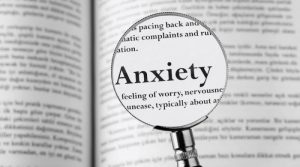
Introduction:
CBD, or cannabidiol, is a natural compound found in the Cannabis plant. Unlike THC, another compound found in the plant, CBD is non-psychoactive and does not cause the “high” associated with marijuana use. CBD has been gaining popularity as a potential treatment for a variety of health conditions, including pain relief. In this blog, we will discuss how CBD may provide natural pain relief and explore its potential benefits.
1. How CBD works for pain relief
CBD interacts with the endocannabinoid system (ECS), a network of receptors found throughout the body that plays a role in regulating various physiological processes, including pain perception. CBD may help alleviate pain by binding to and activating certain receptors in the ECS, which can reduce inflammation and dampen pain signals. CBD may also impact neurotransmitters, such as serotonin and dopamine, which can influence pain perception.
In addition, CBD may have anti-inflammatory effects that could help reduce pain and inflammation in the body. A 2015 review of preclinical and clinical studies on CBD and pain management found that CBD has potential as a treatment for a variety of pain conditions, including neuropathic pain, cancer pain, and fibromyalgia.
II. Types of pain that CBD may help with
CBD may be beneficial for various types of pain, including chronic pain, arthritis pain, neuropathic pain, and migraine headaches.
Chronic pain
Chronic pain is defined as pain that lasts for three months or longer. It can be caused by a variety of underlying conditions, such as arthritis, fibromyalgia, and nerve damage. CBD may help alleviate chronic pain by reducing inflammation and dampening pain signals in the body.
Arthritis pain
Arthritis pain is a common type of chronic pain that affects millions of people worldwide. CBD may help reduce arthritis pain by reducing inflammation in the joints, which can help alleviate pain and stiffness.
Neuropathic pain
Neuropathic pain is caused by damage or dysfunction of the nerves and can be a challenging type of pain to manage. CBD may be beneficial for neuropathic pain because it can reduce inflammation and dampen pain signals in the body.
Migraine headaches
Migraine headaches are a type of headache characterized by intense pain, nausea, and sensitivity to light and sound. CBD may help alleviate migraine headaches by reducing inflammation and calming overactive pain receptors in the brain.
III. Safety and side effects of CBD for pain relief
CBD is generally considered safe, with few reported side effects. However, like any supplement or medication, CBD may interact with other medications or have adverse effects in certain populations.
A 2017 review of the safety and side effects of CBD found that it is generally well-tolerated, with side effects typically mild and transient. The most common side effects reported were fatigue, diarrhea, and changes in appetite or weight.
CBD may also interact with certain medications, such as blood thinners, and should not be used by pregnant or breastfeeding women without first consulting with a healthcare provider.
IV. How to use CBD for pain relief
CBD can be administered in various forms, including tinctures, capsules, topicals, and edibles. The best delivery method depends on the type of pain being treated and personal preference.
Tinctures are a popular way to consume CBD because they are easy to use and can be absorbed quickly into the bloodstream. Tinctures are typically administered sublingually, or under the tongue, for faster absorption.
Topicals, such as creams and balms, are applied directly to the skin and may be beneficial for localized pain, such as arthritis pain.
Edibles, such as gummies and chocolates, can be a fun and convenient way to consume CBD, but may take longer to take effect compared to other delivery methods.
It is important to start with a low dose of CBD and gradually increase as needed.
When using CBD for pain relief, it is important to choose high-quality products from reputable sources. Look for products that have been third-party tested for potency and purity, and that have a Certificate of Analysis (COA) available for review.
Dosage considerations will vary depending on the individual and the type of pain being treated. It is recommended to start with a low dose and gradually increase as needed. A healthcare provider can offer guidance on dosing and provide personalized recommendations.
FAQs
Q: Is CBD legal?
A: CBD is legal in many countries, including the United States, as long as it is derived from hemp and contains less than 0.3% THC. However, laws and regulations surrounding CBD can vary by state and country, so it’s important to check local laws before purchasing and using CBD products.
Q: Will CBD make me high?
A: No, CBD is non-psychoactive and will not cause a “high” like THC, another compound found in the cannabis plant.
Q: How long does it take for CBD to work?
A: The onset and duration of CBD’s effects can vary depending on the delivery method and individual factors, such as metabolism and dosage. Some people may feel the effects within minutes, while others may take several days of consistent use to notice a difference.
Q: Can I take CBD with other medications?
A: CBD may interact with certain medications, such as blood thinners, and should not be used without first consulting with a healthcare provider. CBD may also enhance or inhibit the effects of other medications, so it’s important to discuss potential interactions with a healthcare provider.
Q: Are there any side effects of CBD?
A: CBD is generally well-tolerated, with few reported side effects. The most common side effects reported include fatigue, diarrhea, and changes in appetite or weight. However, some people may experience other side effects, such as dry mouth or dizziness.
Q: How do I choose a high-quality CBD product?
A: Look for products that have been third-party tested for potency and purity, and that have a Certificate of Analysis (COA) available for review. Choose products from reputable sources and start with a low dose to assess tolerance and effectiveness.
V. Conclusion
CBD may provide a natural and potentially effective treatment option for various types of pain, including chronic pain, arthritis pain, neuropathic pain, and migraine headaches. CBD works by interacting with the endocannabinoid system and may have anti-inflammatory effects that can help reduce pain and inflammation in the body.
While CBD is generally considered safe, it may interact with certain medications and should not be used by pregnant or breastfeeding women without consulting with a healthcare provider. When using CBD for pain relief, it is important to choose high-quality products from reputable sources and start with a low dose.
Natural pain relief options, such as CBD, can provide an alternative to traditional pain medications that may have harmful side effects or be addictive. If you are experiencing chronic pain, consider speaking with a healthcare provider to explore natural pain relief options that may be beneficial for your individual needs.






